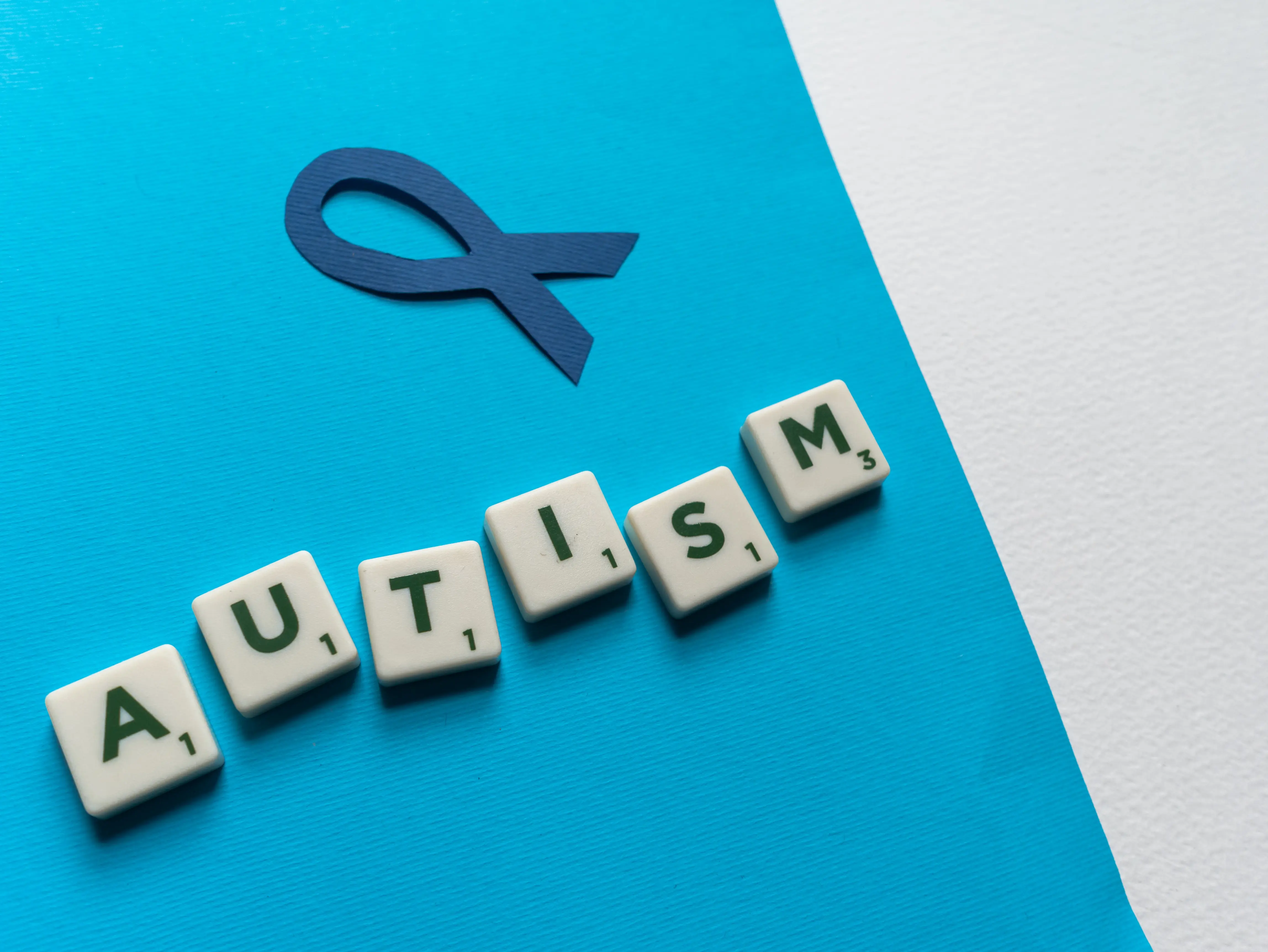The Autism spectrum consists of a wide range of neurodevelopmental conditions that fall under the umbrella of autism spectrum disorders (ASD). Autism is recognized as one of the leading psychiatric disorders among children in the U.S. The autism spectrum is a health term used to accurately refer to people who exhibit numerous challenges in coordinating, mingling, communicating both orally and verbally, and acquiring a language (Lord et al., 2019). According to the ICD-11, released in January 2021, the Autism spectrum is primarily characterized by insufficiencies in the capability of a child or an adult to start and maintain two-way communication and unusual constant behavior for the person’s age or situation at hand (Feroe et al., 2021). ASD is often linked to early childhood, where a diagnosis can be made when a child is between their first two years of life. However, the symptoms can also begin presenting later in life and are closely associated with increased social interaction. Depending on the contexts of the deficits, ASD can lead to numerous barriers in a person’s personal life, family, educational and work-related situations. Additionally, those identified with ASD are often much challenged and needy hence requiring people around them to offer them interventions and long-term support (Lord et al., 2018). Although the causes of the Autism spectrum are not yet known and why it impairs an individual’s linguistic and communication skills, numerous evidence-based interventions have been proposed. Therefore, this essay will provide a literature review of the epidemiology, assessment, diagnosis, evidence-based intervention strategies, and future directions concerning what should be done concerning ASD.
Epidemiology of the Autism Spectrum Disorder
ASD affects different groups of children globally. A report released by the World health organization (WHO) indicates that the incidence of ASD is at 0.76 percent internationally. Nevertheless, the findings from this report only cater for roughly 16 percent of the entire children population globally. A similar report released by the Centre for Disease Control (CDC) indicates that within the U.S, it is estimated that approximately 1.5 percent of children under eight years have been diagnosed with ASD (Campisi et al., 2018). Although the provided figures are almost similar to the figures reported in 2012, a telephone survey that relied on the parent’s reports provided higher figures for children who have ASD than the national prevalence estimates, which are currently at 2.2 percent (Lyall et al., 2017). The slight escalation in the number of kids with ASD has mainly presented with mild symptoms and less dramatic behavior changes. Due to the inherent complexities in accounting for the instantaneous alterations in the Diagnostic practices, coding tendency, and community awareness, it has become difficult to use the available administrative data to accurately differentiate the variations that exist in the prevalence of ASD due to alterations in the actual risk factors and potential factors (Lyall et al., 2017).
The incidence of ASD in the U.S varies by demographic factors and is primarily less prevalent among nonwhites, Hispanics, and people from low socioeconomic status. Additionally, there has always been a delayed diagnosis in this group of individuals. Over time, it is worth observing that the disparities of ASD have been narrowing in certain regions within the U.S and are less prevalent when ASD is closely associated with cognitive disabilities (Hodges et al., 2020). On the other hand, when assessing the prevalence of ASD in Scandinavian countries, the diagnosis of ASD tends to be closely related to low socioeconomic status.
The changes in the healthcare sector and insurance coverage have also contributed to an increase in the prevalence of ASD. For instance, within the U.S, insurance requires that all commercial plans should cater for services provided to ASD individuals along with improved awareness. Such provisions it has resulted in the diagnosis of milder cases of the spectrum hence increasing the demographic estimates (Hodges et al., 2020). Although a remarkable increase in ASD dominance has been made after the insurance provisions, later increases have been noted since healthcare professionals gained an understanding of the governing and compensation process. Lastly, the upsurge in the number of ASD-reported cases may be due to variations in the reporting practices (Hodges et al., 2020).
Numerous studies have been conducted with respect to the epidemiology of ASD. For instance, a recent study conducted in Denmark indicates that the increasing estimates of ASD within the country were founded on the evolution in the diagnostic standards and incorporation of casualty data (Hodges et al., 2020). Additionally, the existing data indicate that ASD is more common in males than in their female counterparts. However, a recent meta-analysis indicates that the authentic male to female proportion is close to 3:1 and not 4:1, as had been previously reported. One aspect that plays a role in females not getting a clinical diagnosis is the female autism phenotype (Hodges et al., 2020). Females with ASD are less likely to exhibit with overt symptoms or hide some of their social deficits through camouflaging, hence preventing a timely diagnosis. Multiple genetic diagnoses have also played a role in increasing the rate of co-occurring ASD in relation to the normal population. These genetic factors include fragile X, tuberculosis sclerosis, Down syndrome, and Rett syndrome (Hodges et al., 2020). However, the mentioned chromosomal disorders only represent a small percentage of the reported ASD diagnoses. Based on such factors, it is evident that increased awareness, evolution in the Diagnostic criteria, and genetics play a critical role in the reported cases of ASD globally and within the U.S (Hodges et al., 2020).
Assessment and diagnosis of Autism Spectrum Disorder
The assessment and diagnosis of ASD can be challenging to the physicians and emotionally derailing for the parents. Assessment for ASD Usually kicks off with the evaluation of the overall children population to recognize children at risk of presenting signs that are indicative of an ASD (Kroncke et al., 2016). After the screening, a diagnostic evaluation is often recommended. According to the American Academy of Pediatrics (AAP), the current policy recommend that evaluations should be conducted at 9, 15, and 30 months. Autism-specific screening should be conducted at 18 months, with follow-ups done at 23 and 30 months (Kroncke et al., 2016). During these assessments, the common early red flags that can be noted include impaired eye contact, poor replies to their names and inability to share, absence of gesturing at 12 months, and impaired phonological or social skills (Kroncke et al., 2016).
The main screening tools used for children between 9 to 30 months include the modified worksheet for Autism in toddlers revised with follow-up (M-CHART-R/F) and the survey of Well-being of young children (SWYC). When assessing preschoolers, some of the presentations worth noting include limited pretend play and rigidity (Kroncke et al., 2016).In contrast, school-age children may present with difficulties in understanding emotions and an absence of conversational skills even if they show interest in their peers. If a clinician notes any suspicion in these groups, the screening tools that can be used to develop a positive diagnosis of ASD consist of the social communication questionnaire (SCQ) and the Autism Spectrum Screening Questionnaire (ASSQ).
Any concerns noted during the assessment process should be noted and the appropriate recommendations done (Kroncke et al., 2016). Additionally, clinicians must recommend the child to a specialist such as a pediatric neurologist to make a more precise diagnosis and a comprehensive assessment. During this phase, the comprehensive assessment should consist of a thorough head-to-toe physical examination, including screening for dysmorphic features, a detailed neurologic investigation, head circumference inspection, and a Wood’s lamp skin analysis (Kroncke et al., 2016). Conducting an interview with the child’s parent and clinician regarding the child’s intellectual, language, and adaptive operations should form part of the comprehensive assessment.
When conducting the comprehensive screening and assessment, clinicians need to be aware of the possibilities of co-occurring conditions in ASD children and pay close attention to them. A recent surveillance study indicates that 83 percent of children with ASD have another developmental diagnosis, and 10 percent have at least one more psychiatric disorder. In comparison, 16 percent may present with at least one neurologic disorder (Kroncke et al., 2016). According to studies using electronic health records (EHR), children with ASD are likely diagnosed with epilepsy and gastro intestinal disorders. However, epilepsy is more prevalent since it accounts for 20 percent of all the reported conditions in ASD children. 50 to 70 percent of children with ASD have also been reported to experience sleep problems. The prevalence of this problem is based on the presenting sleep symptoms and the type of measurement tool used during the assessment process (Kroncke et al., 2016). Children with ASD may also be diagnosed with different behavioral or psychiatric conditions, including anxiety, hyperactivity disorders, obsessive-compulsive disorder, and disruptive disorders. According to a recent meta-analysis of 30 studies assessing the anxiety and depression rates, 42 percent of ASD and 37 percent were diagnosed with anxiety or a depressive disorder (Kroncke et al., 2016). Based on these findings, clinicians must pay attention to detail since this will help them diagnose other comorbidities that go along with ASD and provide the appropriate interventions.
The American Psychiatric Association’s Diagnostic and Statistical Manual (DSM-5) is commonly used in diagnosing ASD. For a child or individuals to be diagnosed with ASD, t is crucial that they have a persistent deficit in three main areas. The first area concerns deficits in social-emotional reciprocity and ranging (Constantino & Charman, 2016). Secondly, they must have insufficiencies in nonverbal communicative behaviors, which are important for maintaining positive social interactions. Lastly, they must have gap in developing, sustaining, and understanding relationships. The severity of ASD is also based on constant patterns of behavior, interests, or actions. DSM 5 and ICM 11 are commonly used as criteria for diagnosing Autism (Constantino & Charman, 2016). The main difference is that ICM 11 offers detailed guidelines for differentiating between Autism with or without intellectual impairments. On the other hand, the DSM-5 mainly acknowledges that Autism and intellectual disability can occur together and should be considered when diagnosing the disorder (Constantino & Charman, 2016).
Evidence-Based Interventions for Autism Spectrum Disorder
The complex nature of ASD has made it challenging for its management using one approach or treatment plan. Every case of ASD is different, hence the need to provide specialized treatment. Different professionals agree that it is crucial to provide early interventions for a positive prognosis (Constantino & Charman, 2016). Due to such aspects, there has been a call to use evidence-based interventions that have been validated through sound scientific research. Therefore, different strategies or interventions have been identified and are currently being used in the management of ASD. The interventions are discussed below.
Applied Behavior Analysis (ABA)
ABA denotes the procedure taken to apply behavioral principles in changing explicit behaviors and concurrently appraising the efficiency of the intervention. ABA strongly stresses preventing and remediating the identified problem behavior (Alves et al., 2020). Although numerous empirical studies have demonstrated the effectiveness of ABA, it is recommended that it is provided under the supervision of a trained behavioral psychologist or behavior analyst. According to existing studies, best outcomes can arise when ABA is initiated early, preferable when the child has not reached their fifth birthday (Alves et al., 2020). Despite the effectiveness, there is an existing debate regarding the amount of ABA that needs to be provided for it to be effective. A strong emphasis has been placed on training caregivers to offer ABA in-home and community backgrounds.
Pivotal Response Training (PRT)
PRT is an organized technique used in the application of the ABA scientific principles. PRT mainly works by building on a child’s initiative and interests, hence making it possible for the child to develop effective communication, social behaviors, and play (Hardan et al., 2015). Using this approach also enhances the important learning variables related to enthusiasm, replying to different cues, self-management, and commencement. However, findings from existing studies recommend that caregivers and teachers implement PRT under natural contexts since it is cost-effective and time-saving. According to a study led by Hardan et al. (2015), PRT interventions are more operational in enhancing the social communication skills of children with ASD when compared to ABA hence the need for its adoption (Hardan et al., 2015).
Discrete Trial Training (DTT)
DTT is an intervention used to manage ASD and is primarily founded on behavioral learning theory and applied behavioral analysis. When using this intervention, a descriptive stimulus is often presented, and when a child responds positively, they are awarded for their behavior (Watkins et al., 2016). DTT is one of the comprehensive strategies used in the management of Autism since it incorporates different strategies, including errorless learning, shaping, modeling, prompting, correction and reinforcement. Integrating these skills is important since it plays an integral role in skill acquisition (Watkins et al., 2016). When using this intervention, one must keep in mind that it is best suited for developing skills that can be taught in small and recurrent steps. A study conducted by (Watkins et al. (2016) indicates that DTT produces powerful influences on aspects to deal with motor skills, language development, emotional expression, academics, and a significant reduction in aggressive and self-stimulatory behaviors. For DTT to be effective, interventions need to be delivered in the presence of a trained DTT therapist (Watkins et al., 2016).
Functional Communication Training (FCT)
FCT is a strategy used to manage ASD and is mainly used to replace disruptive or inappropriate behaviors with the desired and effective communication. After the therapist identifies the communicative functions of disruptive behaviors, the behavior analysis teaches the children socially appropriate behaviors (Muharib & Wood, 2018). The sessions are provided in the form of replacement therapy. Numerous studies have demonstrated the effectiveness of FCT. According to a study conducted by Muharib & Wood (2018), FCT is often implemented as an antecedent-based intervention and used with non-contingent reinforcement high probability requests. When applying FCT, it is crucial to pay attention to the three phases: functional analysis, socially acceptable communicative responses, and generalization of the outcome (Muharib & Wood, 2018). During the functional analysis phase, a functional analysis is often conducted to help in determining the conditions that can be used in evoking and maintaining the initial problematic behavior. During the second phase, socially acceptable behavior is often proposed. After its implementation, the outcome of the intervention is determined and generalized in other settings (Muharib & Wood, 2018).
Medications
The use of different pharmacological preparations has long been used in managing ASD. However, using medications has also proven to be challenging. The existing medications have been used in managing psychiatric disorders present among children with ASD (Feroe et al., 2021). The most common symptoms managed using medications include hyperactivity, obsessive-compulsive disorders, sleep problems, anxiety, and depression. However, to date, no medications have been developed to aid in the management of social and language impairments among children suffering from ASD (Feroe et al., 2021).
Gold Standards used in the management of Autism Spectrum Disorder
Applied Behavior Analysis (ABA) is the main gold standard used in managing ASD. Applying ABA involves using behavioral principles to address socially important problems (Alves et al., 2020). ABA is an evidence-based intervention with more than 40 years of research suggesting its effectiveness. It greatly impacts communication, social skills, academics, and social functioning, reducing the need to provide the child with specialized services in the future (Alves et al., 2020).
Conclusion/Future Research
Autism spectrum disorder is one of the psychiatric disorders that can be diagnosed in two years and continues throughout a person’s life. The current changes in the diagnosis and provision of medical insurance schemes have increased its prevalence at an alarming rate. Children with ASD are likely to present with symptoms such as intellectual impairments, developmental delays, speech impairments, and inability to maintain positive social interactions. ASD individuals may also present with multiple comorbidities, including sleep problems, anxiety, depression, and gastrointestinal disturbances; as a result, timely interventions are key in ensuring that they live a normal life. Every person diagnosed with ASD is unique; as a result, every intervention should be individualized based on the identified needs. Therefore, providing early interventions can play an integral role in enhancing the social and developmental aspects of children with ASD. When delivering interventions to address ASD, it is important to pay attention to applied behavior analysis (ABA) principles since it is the gold standard for early ASD management.
ABA incorporates different techniques, including functional communication training, which has proven to be successful in causing a decline in disruptive and oppositional behaviors hence increasing communication and social behaviors. Medications have also been used to manage ASD, although they have not proven to be effective in addressing all the comorbidities present in children who have ASD. As a result, emphasis needs to be placed when implementing evidence-based interventions. Although there are numerous evidence-based interventions used in the management of ASD, there still exists a barrier that relates to the absence of a consensus that can be used to identify and evaluate scientifically valid and effective interventions. Further studies, therefore, need to be conducted on the same to help in the proper identification of the best interventions that can be used for managing different symptoms that ASD children present with. Parents and involved stakeholders will be well prepared for its management by understanding the different evidence-based interventions.
References
Alves, F. J., De Carvalho, E. A., Aguilar, J., De Brito, L. L., & Bastos, G. S. (2020). Applied behavior analysis for the treatment of Autism: A systematic review of assistive technologies. IEEE Access, 8, 118664-118672.
Campisi, L., Imran, N., Nazeer, A., Skokauskas, N., & Azeem, M. W. (2018). Autism spectrum disorder. British Medical Bulletin, 127(1).
Constantino, J. N., & Charman, T. (2016). Diagnosis of autism spectrum disorder: reconciling the syndrome, its diverse origins, and variation in expression. The Lancet Neurology, 15(3), 279-291.
Feroe, A. G., Uppal, N., Gutiérrez-Sacristán, A., Mousavi, S., Greenspun, P., Surati, R., & Avillach, P. (2021). Medication use in managing comorbidities among individuals with autism spectrum disorder from a large nationwide insurance database. JAMA pediatrics, 175(9), 957-965.
Hardan, A. Y., Gengoux, G. W., Berquist, K. L., Libove, R. A., Ardel, C. M., Phillips, J., & Minjarez, M. B. (2015). A randomized controlled trial of Pivotal Response Treatment Group for parents of children with Autism. Journal of Child Psychology and Psychiatry, 56(8), 884-892.
Hodges, H., Fealko, C., & Soares, N. (2020). Autism spectrum disorder: definition, epidemiology, causes, and clinical evaluation. Translational Pediatrics, 9(Suppl 1), S55
Kroncke, A. P., Willard, M., & Huckabee, H. (2016). Assessment of autism spectrum disorder. Cham: Springer International Publishing. Doi, 10, 978-3.
Lord, C., Elsabbagh, M., Baird, G., & Veenstra-Vanderweele, J. (2018). Autism spectrum disorder. The lancet, 392(10146), 508-520.
Lyall, K., Croen, L., Daniels, J., Fallin, M. D., Ladd-Acosta, C., Lee, B. K., & Newschaffer, C. (2017). The changing epidemiology of autism spectrum disorders. Annual review of public health, 38, 81-102.
Muharib, R., & Wood, C. L. (2018). Evaluation of the empirical support of functional communication training for children with autism spectrum disorders. Review-Journal of Autism and Developmental Disorders, 5(4), 360-369.
Watkins, L., Kuhn, M., Ledbetter-Cho, K., Gevarter, C., & O’Reilly, M. (2017). Evidence-based social communication interventions for children with autism spectrum disorder. The Indian Journal of Pediatrics, 84(1), 68-75.











